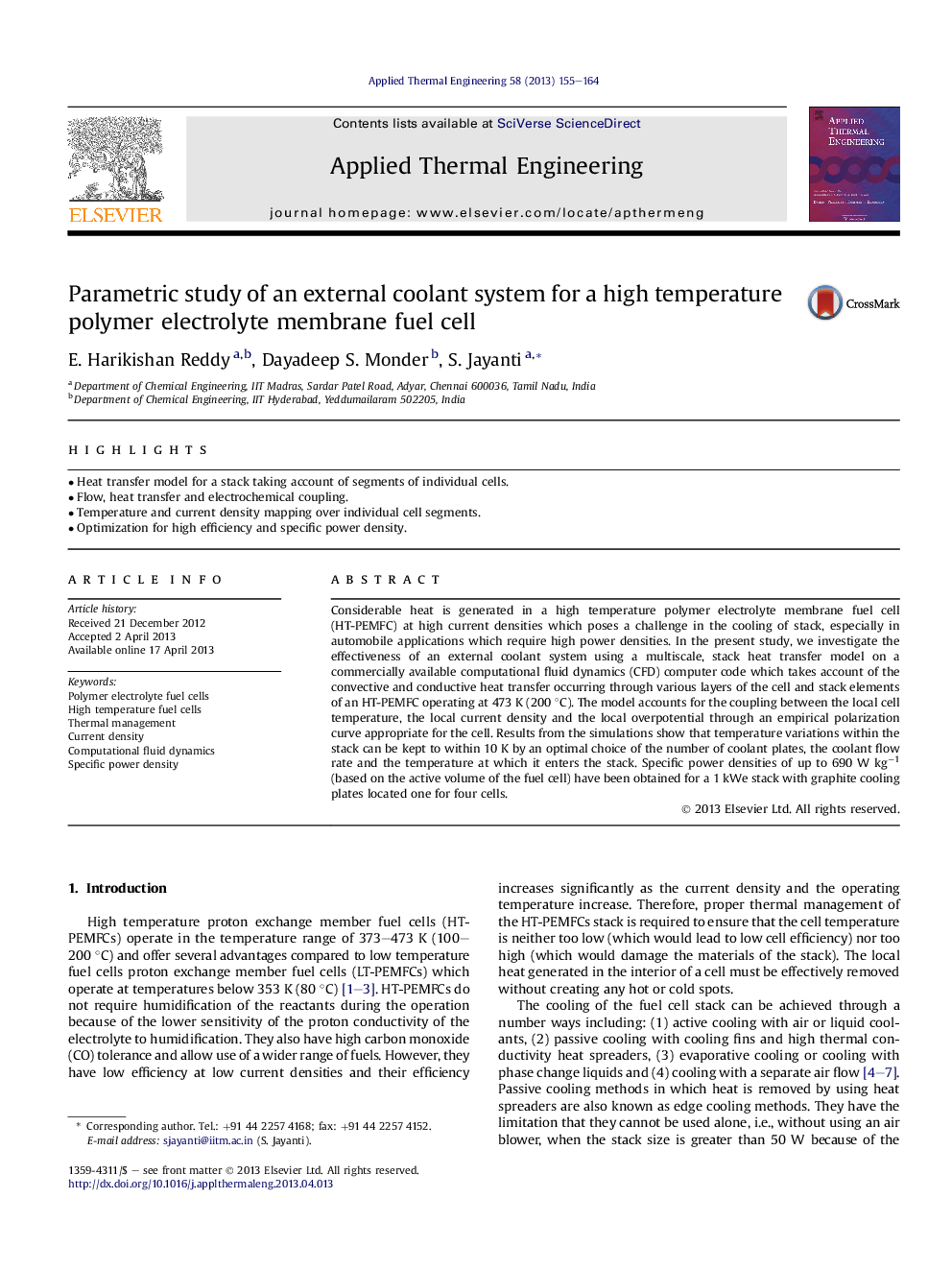| Article ID | Journal | Published Year | Pages | File Type |
|---|---|---|---|---|
| 646794 | Applied Thermal Engineering | 2013 | 10 Pages |
•Heat transfer model for a stack taking account of segments of individual cells.•Flow, heat transfer and electrochemical coupling.•Temperature and current density mapping over individual cell segments.•Optimization for high efficiency and specific power density.
Considerable heat is generated in a high temperature polymer electrolyte membrane fuel cell (HT-PEMFC) at high current densities which poses a challenge in the cooling of stack, especially in automobile applications which require high power densities. In the present study, we investigate the effectiveness of an external coolant system using a multiscale, stack heat transfer model on a commercially available computational fluid dynamics (CFD) computer code which takes account of the convective and conductive heat transfer occurring through various layers of the cell and stack elements of an HT-PEMFC operating at 473 K (200 °C). The model accounts for the coupling between the local cell temperature, the local current density and the local overpotential through an empirical polarization curve appropriate for the cell. Results from the simulations show that temperature variations within the stack can be kept to within 10 K by an optimal choice of the number of coolant plates, the coolant flow rate and the temperature at which it enters the stack. Specific power densities of up to 690 W kg−1 (based on the active volume of the fuel cell) have been obtained for a 1 kWe stack with graphite cooling plates located one for four cells.
